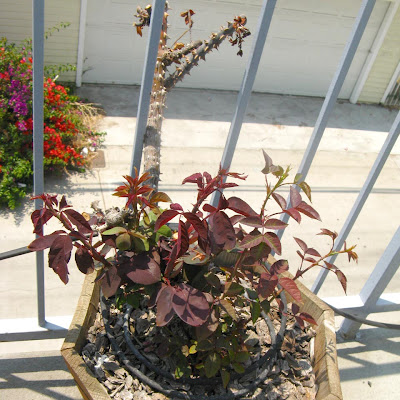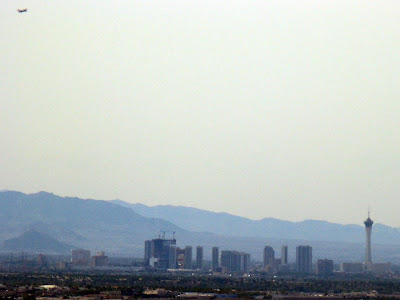
Steinbeck used the Salinas Valley as a setting for many of his stories. In
East of Eden, Caleb Trask likes to jump onto freight trains heading down from Gilroy, at the north end of the valley, over the Coast Range to Monterey with its wharves and canneries. The fertile valley lies parallel to the coast, long and relatively narrow. This view is across the north end of the valley, south of Gilroy, facing west. Unlike Silicon Valley further north (once called the Valley of Heart’s Delight, with its farms and orchards), Salinas Valley still has plenty of acreage devoted to farms.
(P.S. To really see this picture properly, click on it and look at the big version. All the endearing details—farmhouses, trees, tractors—get lost in the thumbnail above.)

My
brother lately sent me a very fine picture of an oak tree that he took years ago. One picture. That’s sensible. Seen one tree, seen ’em all. I mean, they’re not really that different one from another. So he has one picture, and it reminds him from time to time of what an oak tree looks like on a hill, and that’s all he needs.

With some chagrin, I told him that I wasn’t sure exactly where that particular tree was, but that I seemed to be on my way to documenting every individual tree through Pacheco Pass on my frequent drives. Each time you go through, the light’s different and the weather’s different. Sometimes one tree catches your eye, sometimes another.


I have heard this outcropping called different things. (Technically I suspect it’s an igneous intrusion, the old magma core of an ancient volcano that has long since eroded away from around its old hardened heart.) At one point I thought it was called Eagle Mountain, and you’ll notice a bird of prey circling in this picture, which I’ll call an eagle.
On some maps it is marked as Lover’s Leap.

California has been watching
a fire or two burn this summer. We’re not that deep into fire season yet, and we have already had over 1,000 wildfires at various points across the state. A few weeks ago, heading south, I found this patch of blackened hillside. I don’t remember that it even rated a mention in a news story, much less a headline. A month before that, I’m sure it looked like
any other oak-dotted hill.

This time through, I found another blackened patch. A few weeks ago, these hills were golden and green.

An old friend.
 This White Lightning rose is another one that was knocked for a loop when my home was covered with a tent and filled with Vikane gas to kill termites.
This White Lightning rose is another one that was knocked for a loop when my home was covered with a tent and filled with Vikane gas to kill termites. The White Lightning tends to flower in bunches. When I’m maintaining it responsibly, if I clip out the center rose from each bunch, the others are supposed to come in stronger. Generally I’ve found it stays ahead of the pruning shears, and its blooms have never been weak enough for me to worry about making them more full.
The White Lightning tends to flower in bunches. When I’m maintaining it responsibly, if I clip out the center rose from each bunch, the others are supposed to come in stronger. Generally I’ve found it stays ahead of the pruning shears, and its blooms have never been weak enough for me to worry about making them more full.

















































